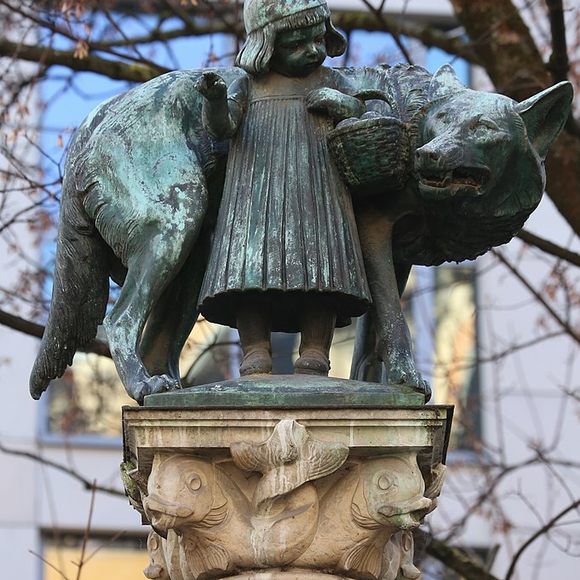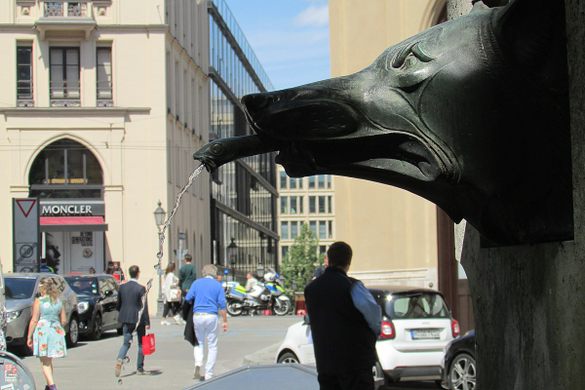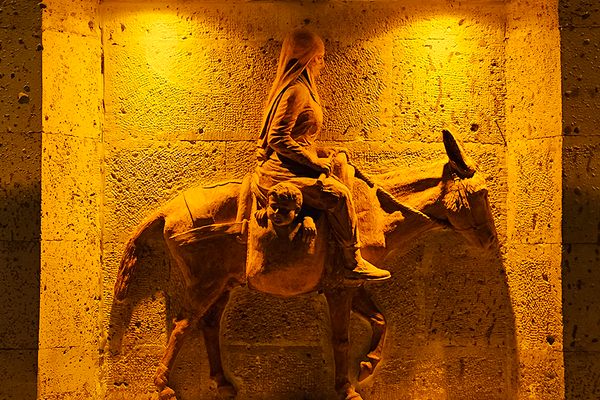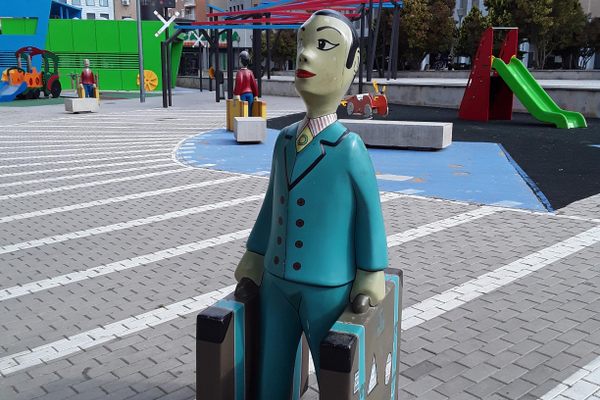AO Edited
Wolfsbrunnen
Oddly enough, a pair of Wolfs funded the construction of this Little Red Riding Hood sculpture.
Under the shade of a maple tree on a Munich street stands a tall, white, granite monument. It’s topped by a bronze sculpture of a young girl encircled by a large wolf, whose fanged smile and guileful posture seem to belie unwholesome intentions.
This is, of course, a depiction of “Little Red Riding Hood” (“Rotkäppchen” in German), a tale recorded and popularized in the 19th century by the Brothers Grimm, who themselves heard it told by rural Bavarians.
At the turn of the 20th century (before the dark years of the First World War), a romantic nationalism came into vogue across Germany, and folkloric stories from an idealized cultural past (such as Rotkäppchen) became a common theme in public monuments that celebrated German culture. However, there is more to this endearing sculpture than meets the eye, as it also immortalizes a once-powerful Munich family.
Adolph and Apollonia Wolf were a wealthy power couple as well as generous benefactors of the Munich art scene during the late 19th and early 20th centuries. In the early 1900s, the Wolfs commissioned local sculptors Heinrich Düll and George Pezold to create a piece of public art that would memorialize the family name within the city landscape while adding to the beauty and charm of the city.
The resulting Art Nouveau sculpture—inaugurated in 1904—playfully alludes to the Wolf family (“wolf” being an English-German cognate) and even includes wolf-headed fountains that spout water from their howling maws.
Know Before You Go
Wolfsbrunnen can be seen for free and is found in the middle of Am Kosttor street.




















Follow us on Twitter to get the latest on the world's hidden wonders.
Like us on Facebook to get the latest on the world's hidden wonders.
Follow us on Twitter Like us on Facebook